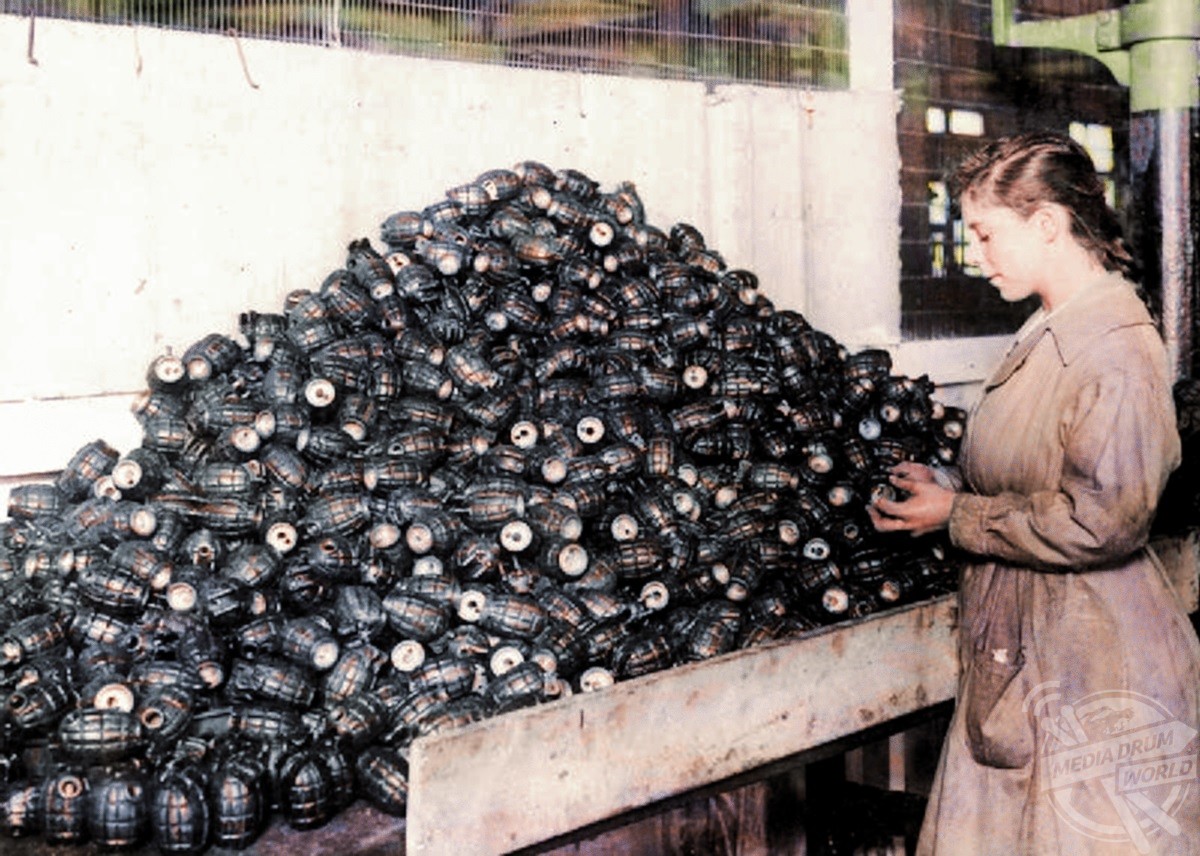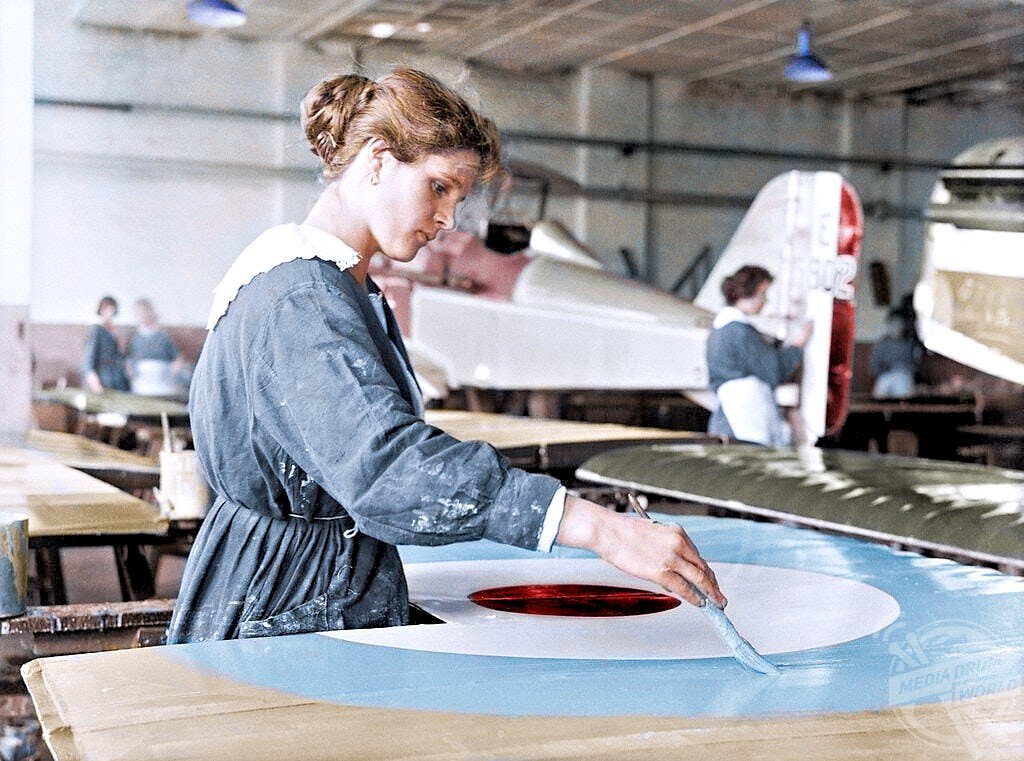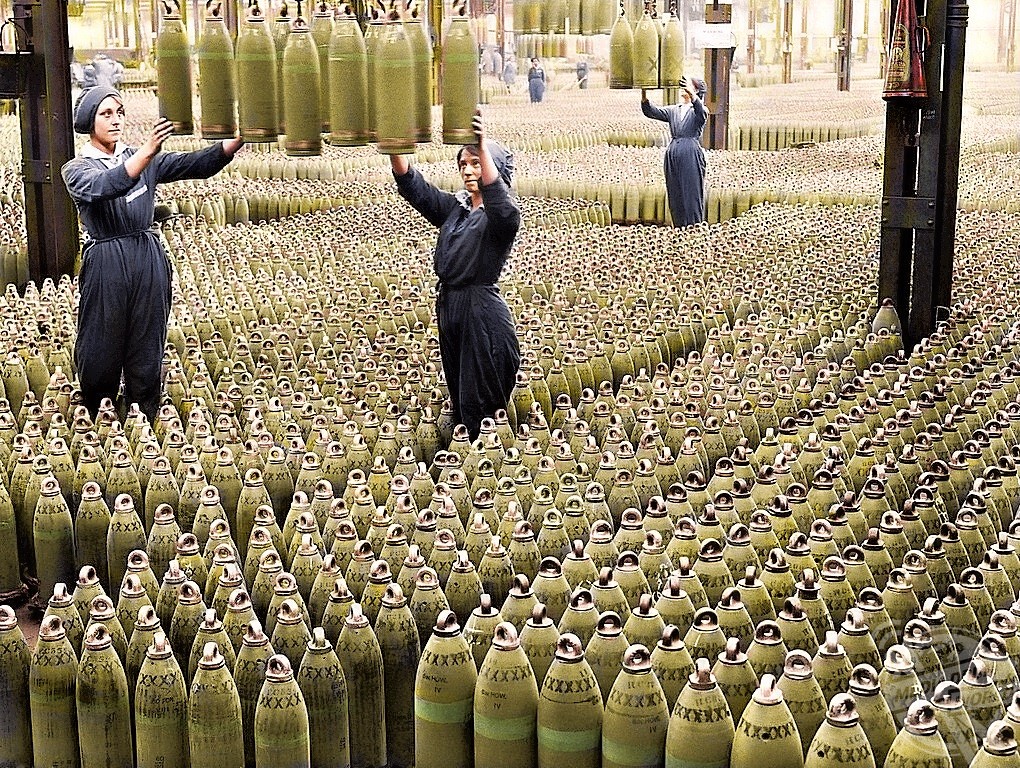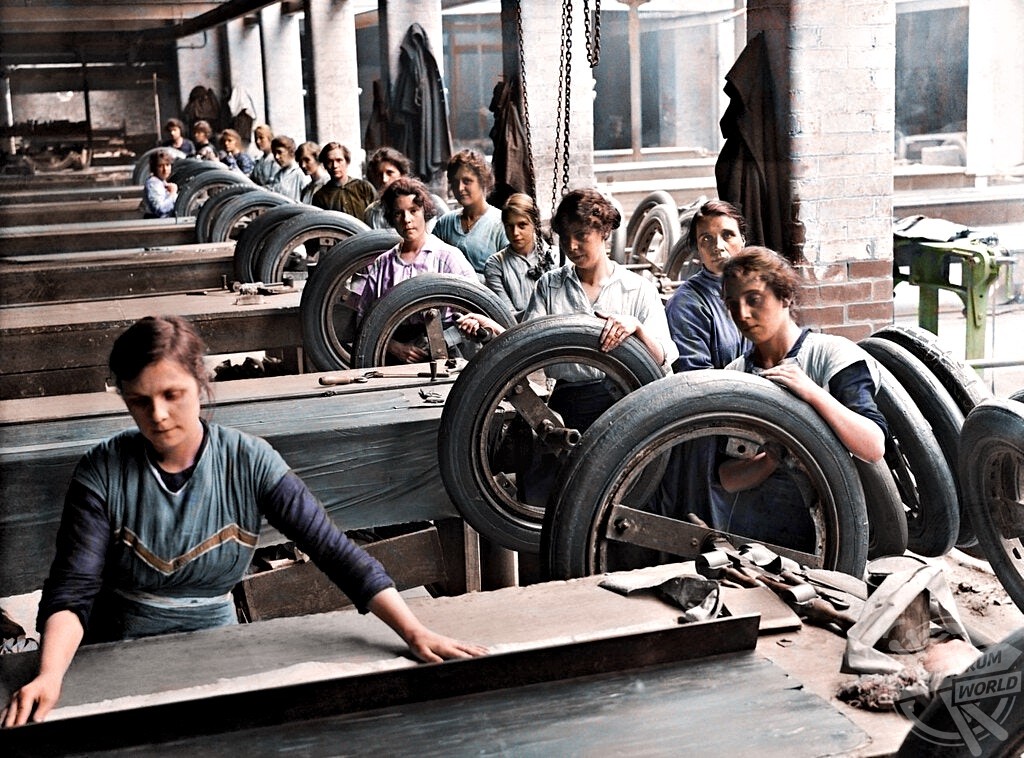By Alex Jones
FASCINATING shots of women workers who ‘manned’ the factories, pits and railways during the First World War have been brought to life in captivating colour.
Remarkable shots from over hundred years ago show a welder making micro adjustments to a vital component in a Midlands aircraft works; munitions workers carefully guiding huge missiles onto the factory floor; and a woman cleaning the inside of a massive 15-inch cannon.
102 years ago, the first women in the UK got the right to vote. This landmark occasion for the female population was due in no small part to the dedicated service of women during the First World War when, after the mass conscription of men to the front line, women stepped up to fill all the vacant positions that the soldiers had left behind.

Suddenly, industries which had previously been the sole domain of men were almost entirely staffed by women instead. Women were casting bricks, generating electricity, building ships, painting railway stations, warming rubber, milking cows, policing, signalling trains, smelting iron, blasting granite, making glucose, digging holes, fighting fires, delivering mail, and constructing houses, in addition to the work already prescribed to them such as childcare and domestic labour. It was a revolutionary time for modern society.
These enchanting colourisations were created by Royston Leonard (57), an electrician from Cardiff who brings historic photos into the modern age. Leonard was shocked by the working conditions that women were flung into.
“For the girls working in the armaments factory, it was a very hard job and a lot got ill from the chemicals used in the making of the shells,” he explained.

“Women played a critical role in the UK’s war effort, without them supplying the front line then no war could have been fought.
“I think that’s why colouring photos is so useful, people are used to colour all the time these days and tend to think of black and white shots as ‘art’ or something other than reality.
I think colourising helps people, especially the younger generation, relate to a photo more.”

By 1917 munitions factories, which primarily employed women workers, produced 80 per cent of the weapons and shells used by the British. Known as ‘canaries’ because they had to handle TNT (the chemical compound trinitrotoluene that is used as an explosive agent in munitions) which caused their skin to turn yellow, these women risked their lives working with poisonous substances without adequate protective clothing or the required safety measures. Around 400 women died from overexposure to TNT during WWI.
According to education website Striking Women, female employment rates increased during WWI, from 23.6 per cent of the working age population in 1914 to between 37.7 and 46.7 per cent in 1918. It is difficult to get exact estimates because domestic workers were excluded from these figures and many women moved from domestic service into the jobs created due to the war effort. The employment of married women increased sharply – accounting for nearly 40 per cent of all women workers by 1918.
Following the war’s end in 1918, many women were laid off when soldiers returned from the battlefields on the continent. Those who stayed on were often expected to work for less money than their male counterparts despite doing the same job. Flagrant workplace discrimination continued until the Second World War, when women once again stepped in to fill the shoes of the men sent away to fight in another global conflict.







